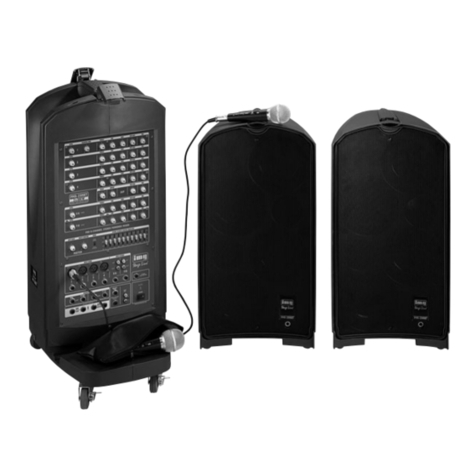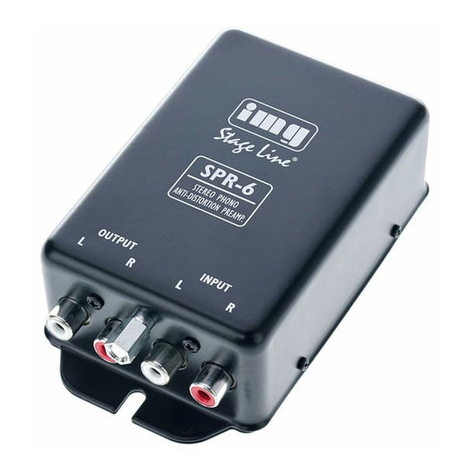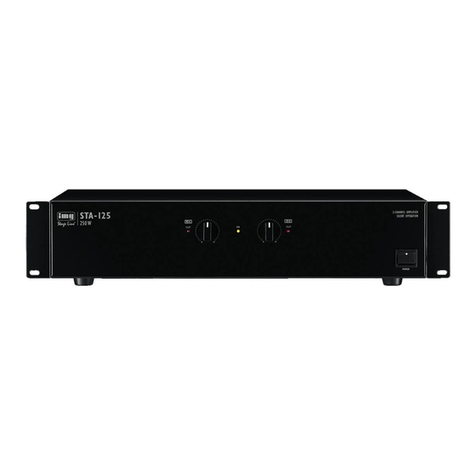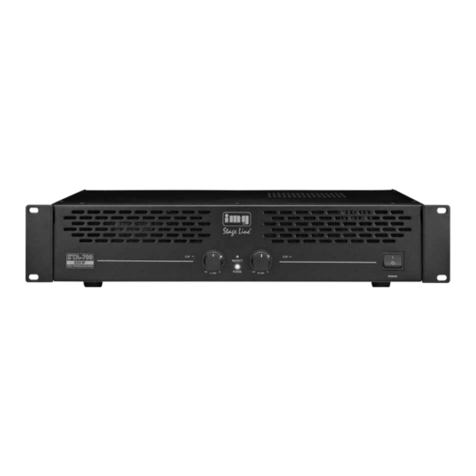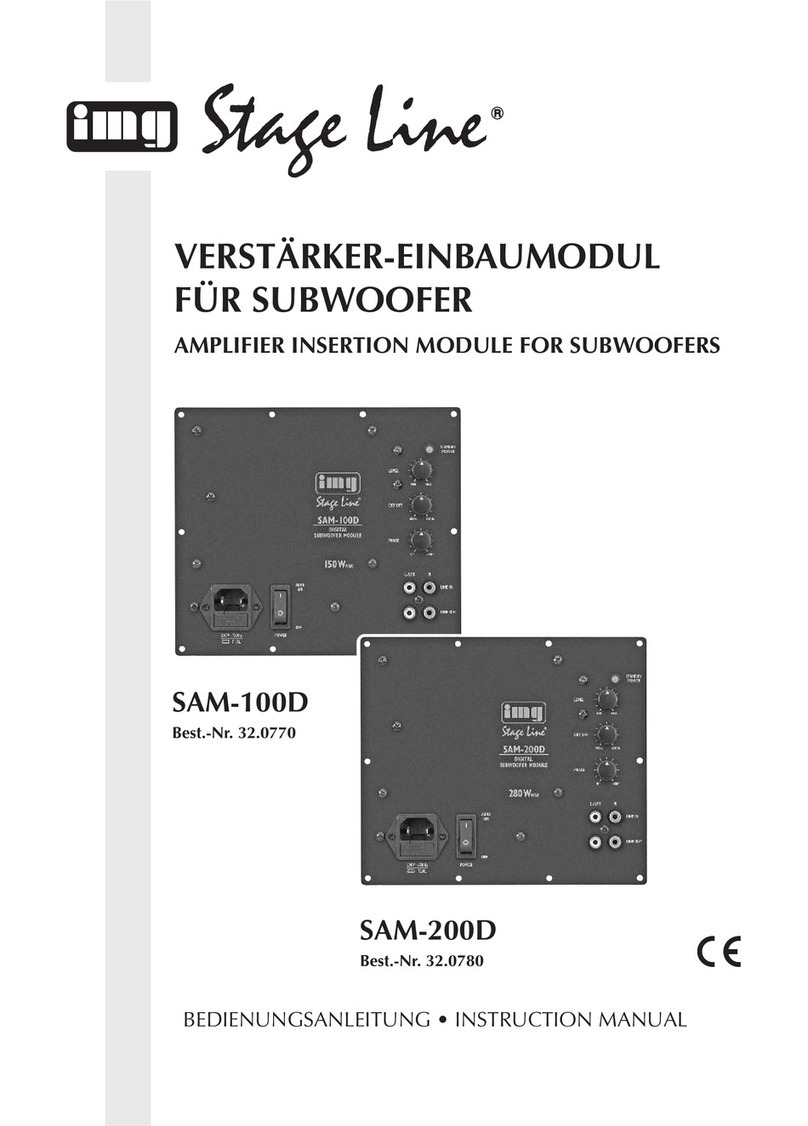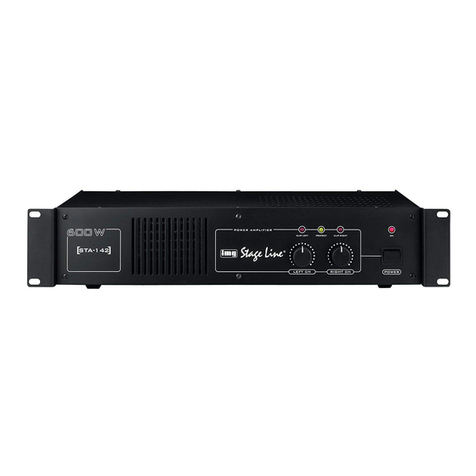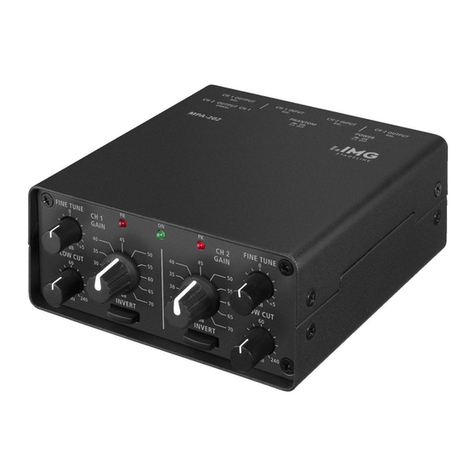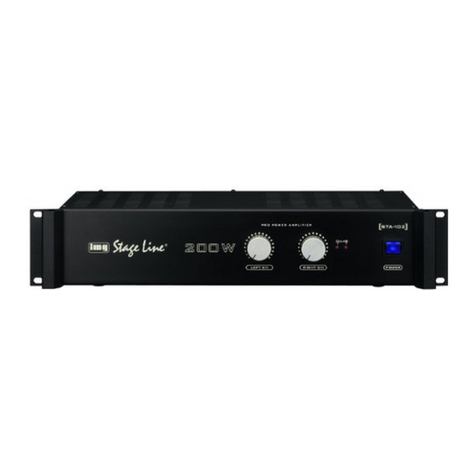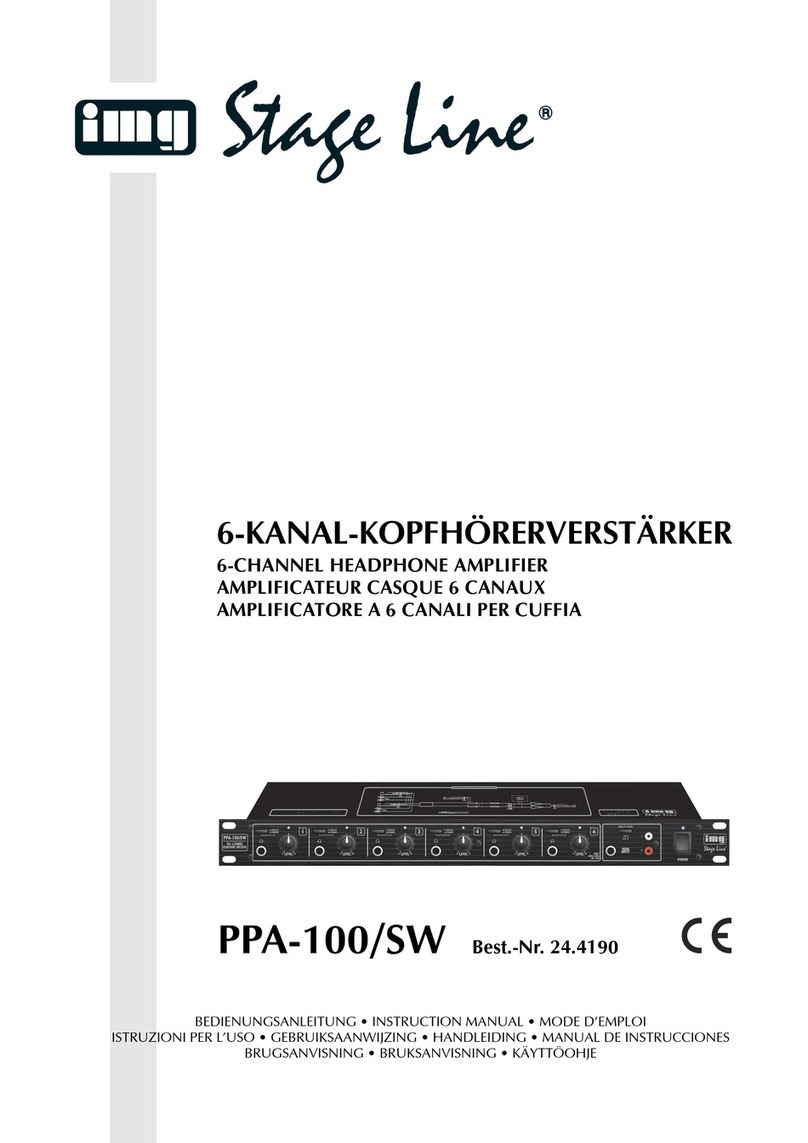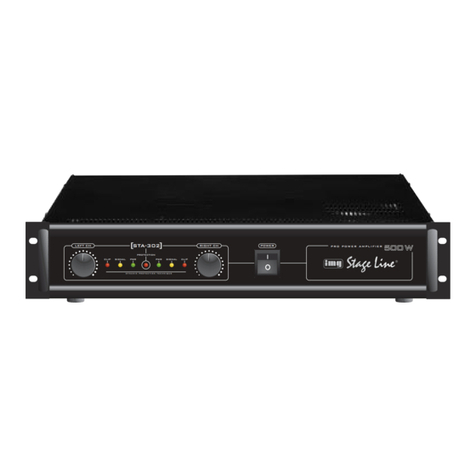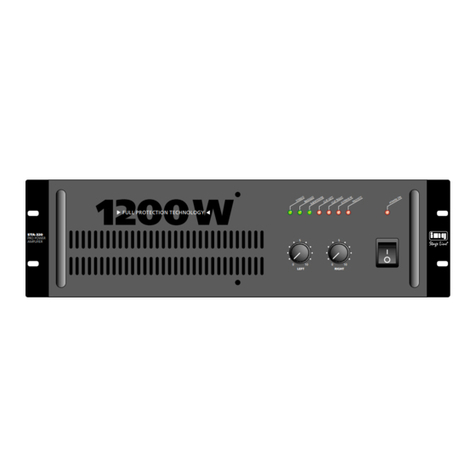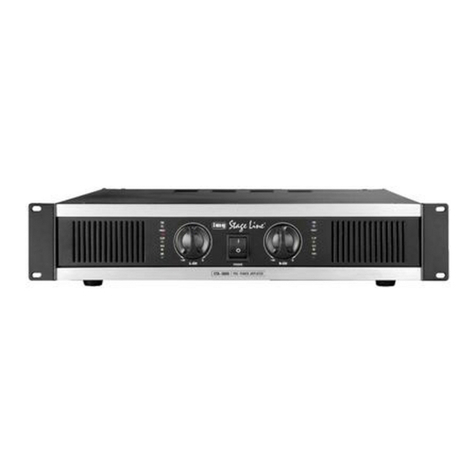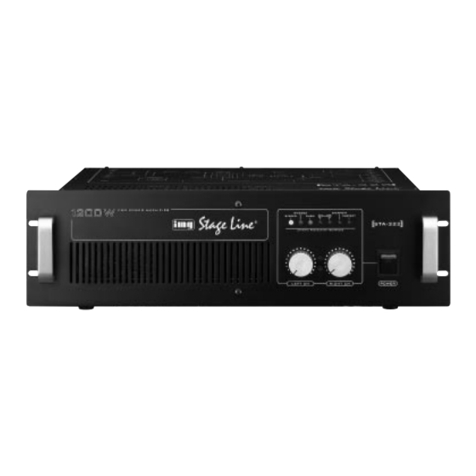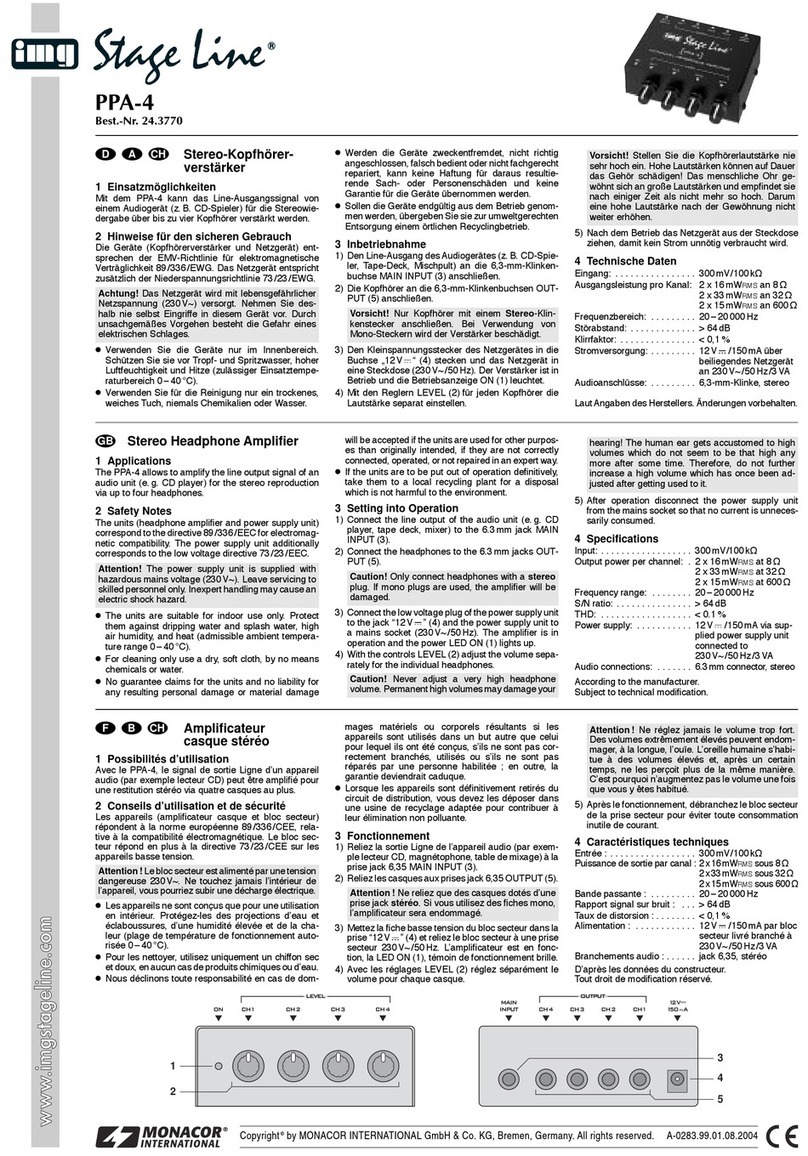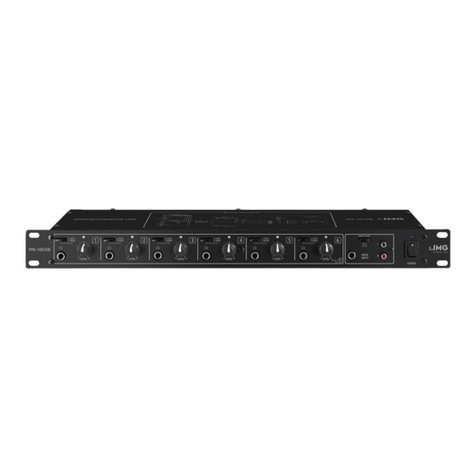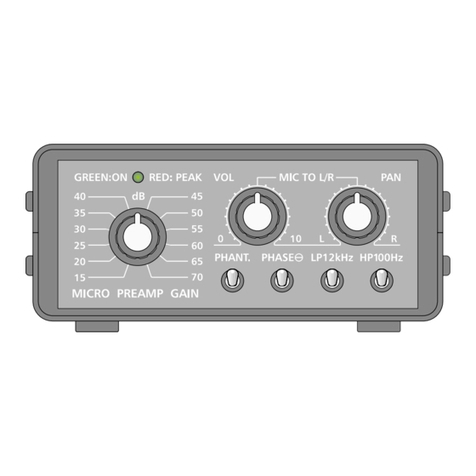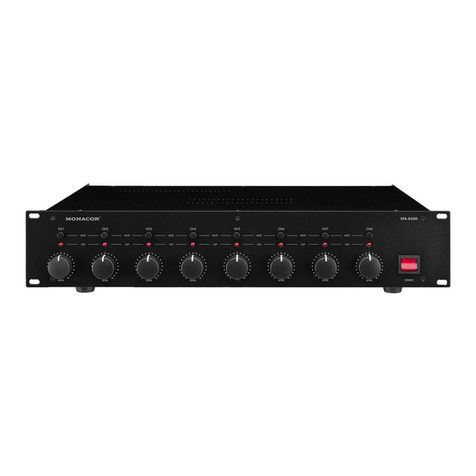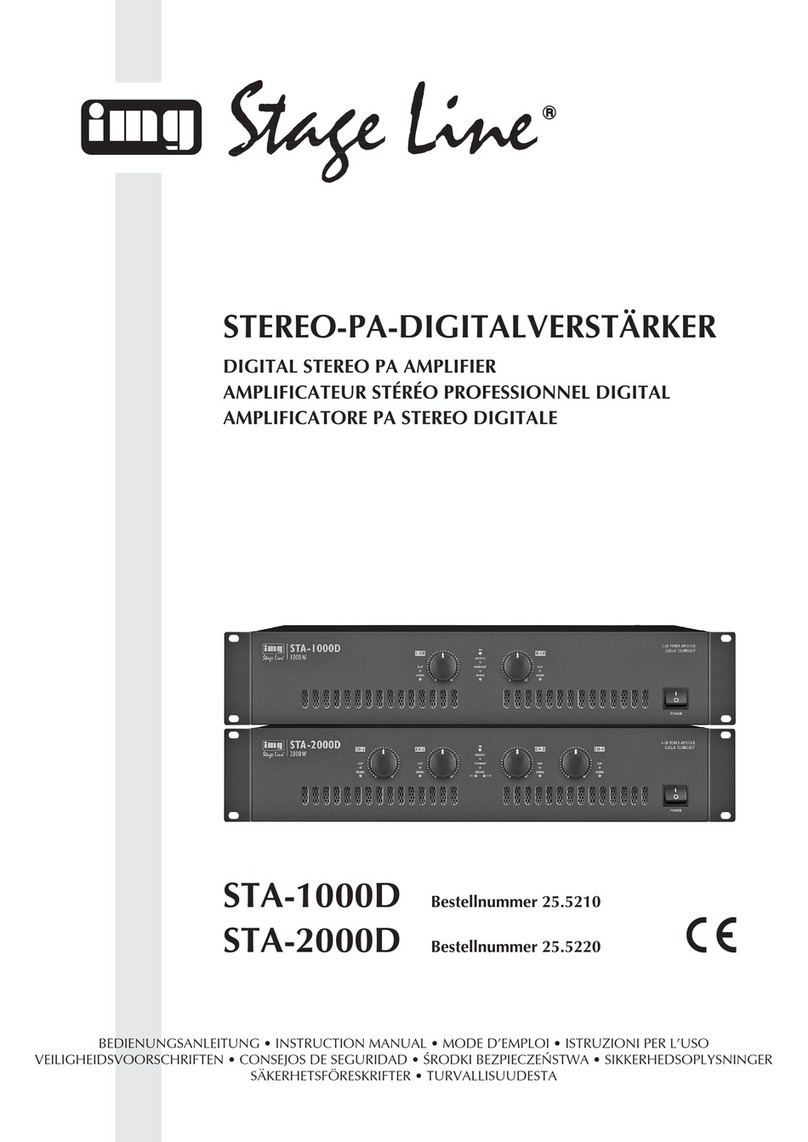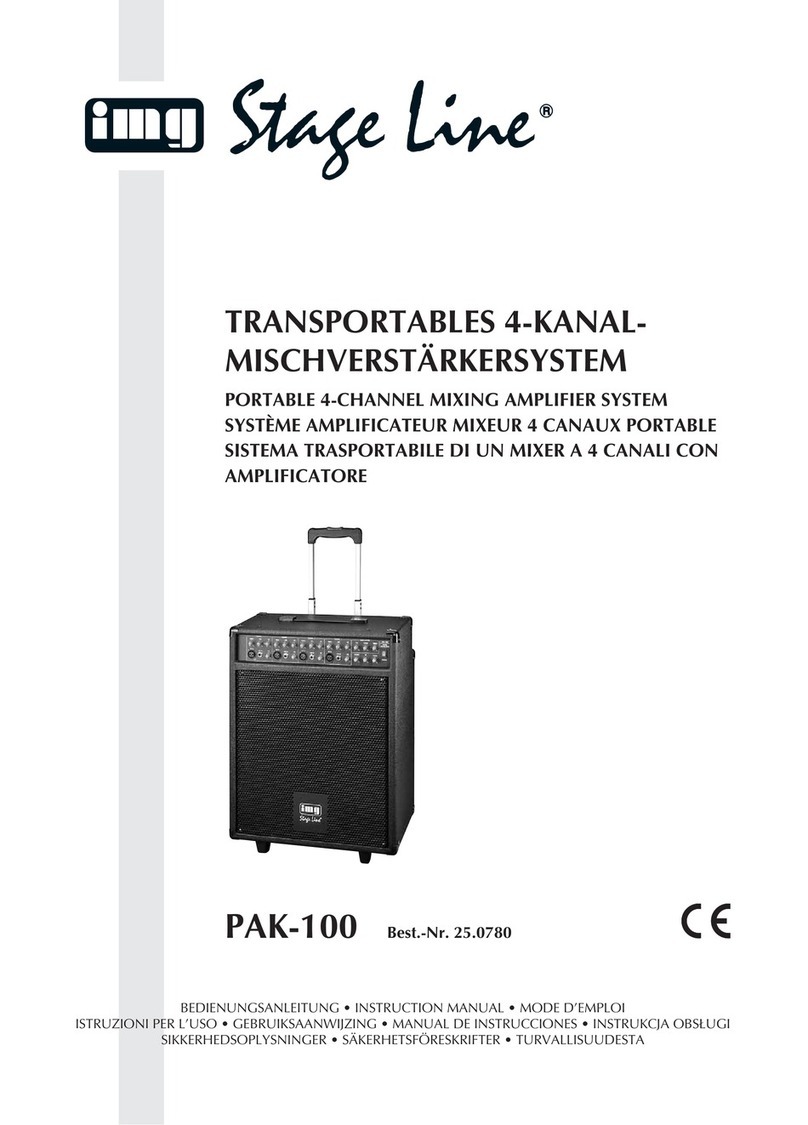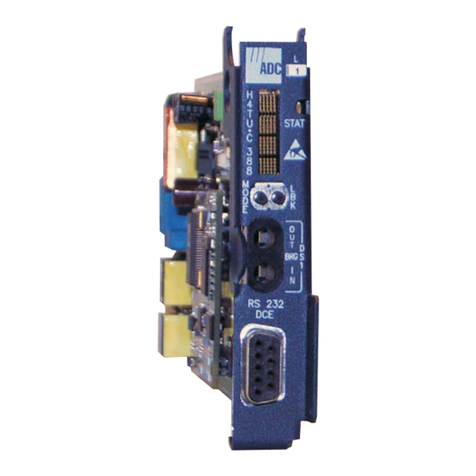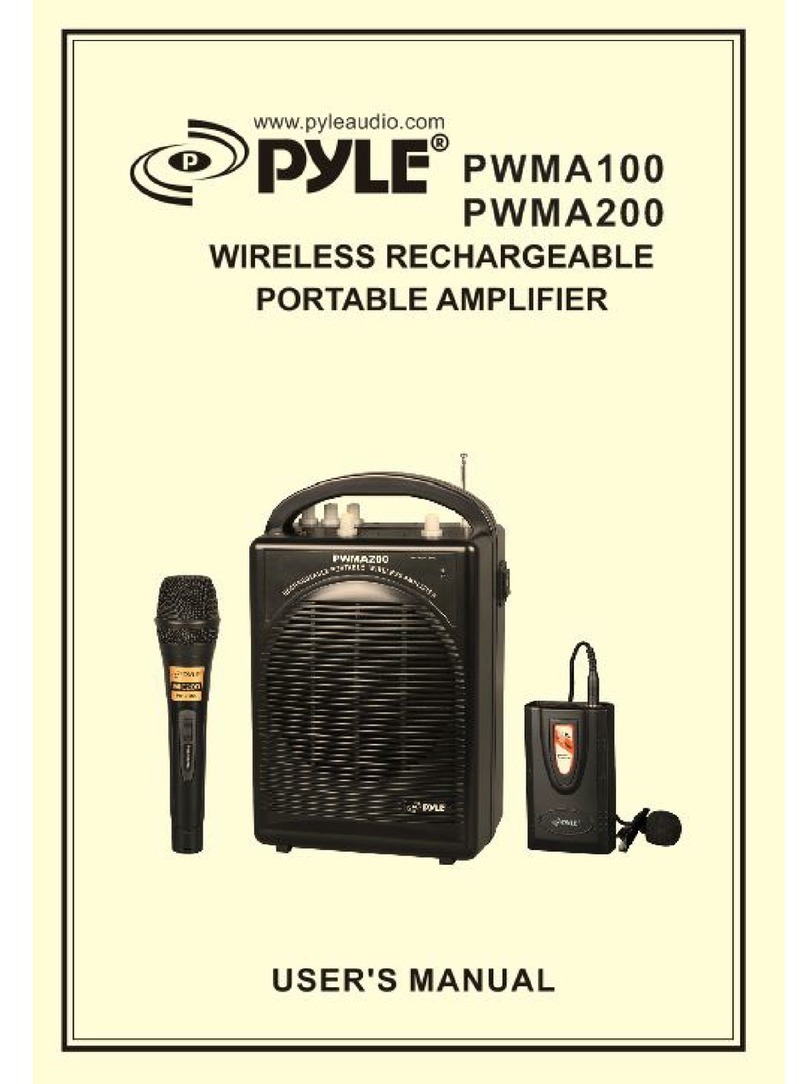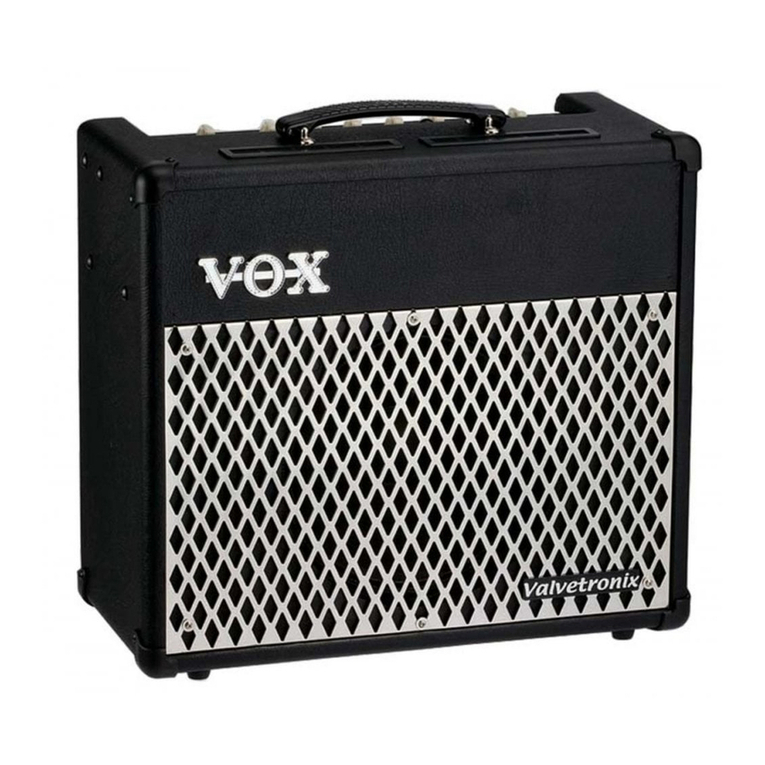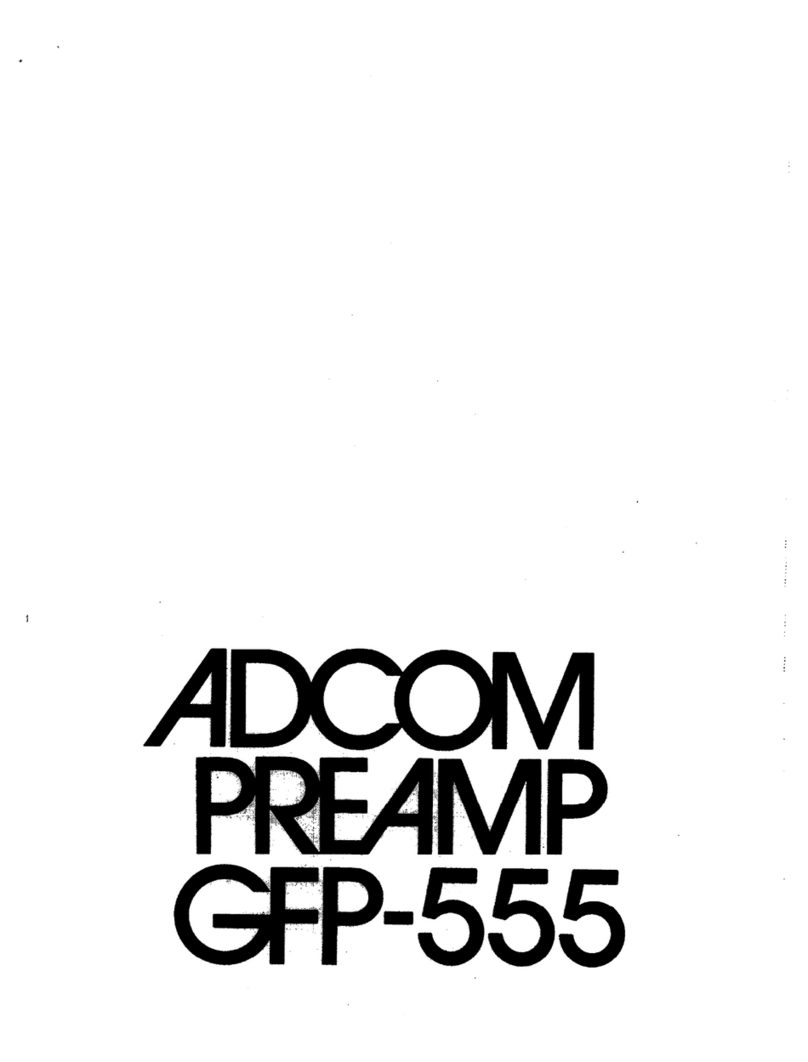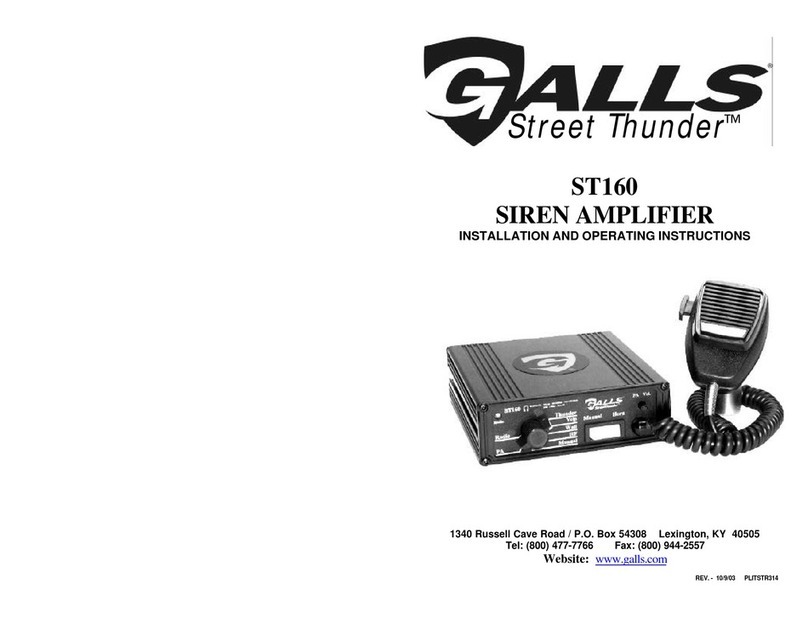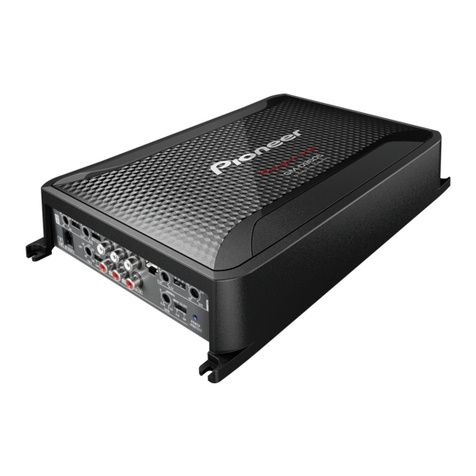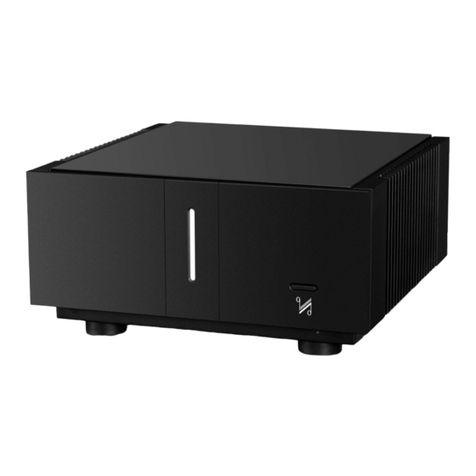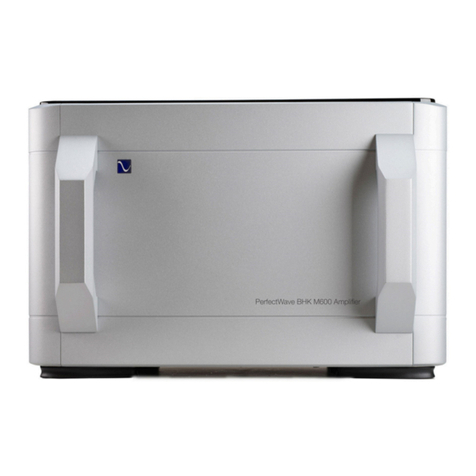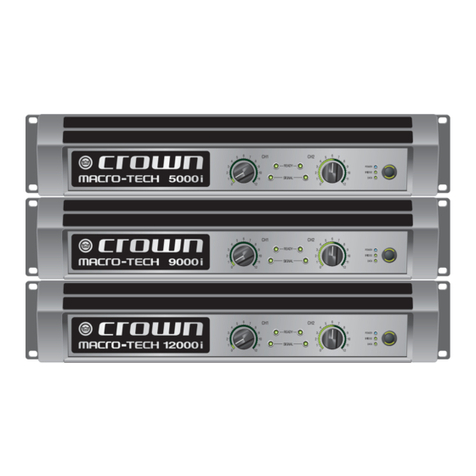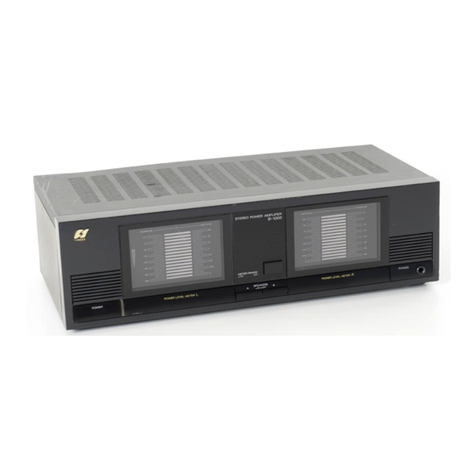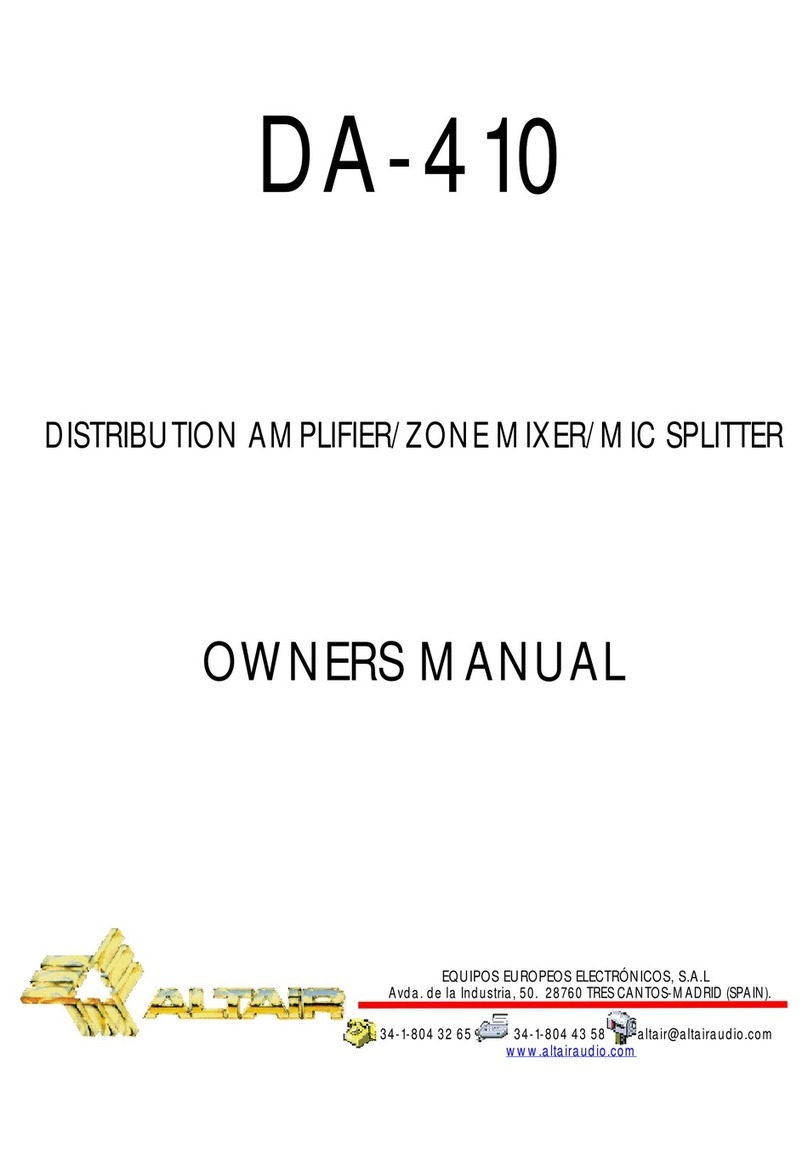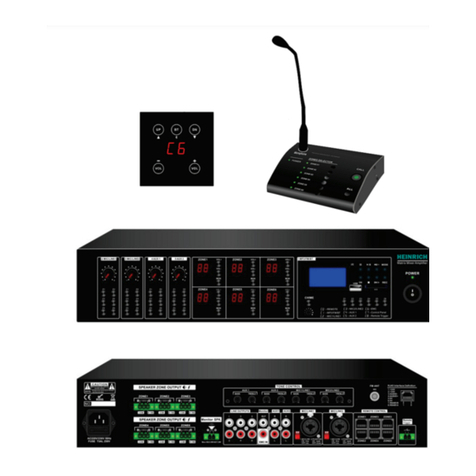Stereo-Mikrofon-
Vorverstärker
Bitte lesen Sie diese Bedienungsanleitung vor dem Be-
trieb gründlich durch und heben Sie sie für ein späteres
Nachlesen auf.
1 Einsatzmöglichkeiten
Mit dem Stereo-Mikrofonvorverstärker MPR-6 lassen
sich bis zu zwei Mikrofone an einen Line-Eingang einer
HiFi-Anlage, eines Verstärkers oder eines Mischpultes
anschließen.
2 Hinweise für den sicheren Gebrauch
Die Geräte (Stereo-Mikrofonvorverstärker und Netzge-
rät) entsprechen allen erforderlichen Richtlinien der EU
und sind deshalb mit gekennzeichnet.
GVerwenden Sie die Geräte nur im Innenbereich.
Schützen Sie sie vor Tropf- und Spritzwasser, hoher
ACHTUNG! Das Netzgerät wird mit lebensgefähr-
licher Netzspannung versorgt. Nehmen Sie deshalb
nie selbst Eingriffe an diesem Gerät vor. Durch
unsachgemäßes Vorgehen besteht die Gefahr eines
elektrischen Schlages.
MPR-6
Best.-Nr. 21.0680
wwwwww..iimmggssttaaggeelliinnee..ccoomm
Copyright©by MONACOR INTERNATIONAL GmbH & Co. KG, Bremen, Germany. All rights reserved. A-1040.99.03.11.2009
®
Luftfeuchtigkeit und Hitze (zulässiger Einsatztempe-
raturbereich 0 – 40 °C).
GVerwenden Sie für die Reinigung nur ein trockenes,
weiches Tuch, niemals Chemikalien oder Wasser.
GWerden die Geräte zweckentfremdet, nicht richtig
angeschlossen, falsch bedient oder nicht fachgerecht
repariert, kann keine Haftung für daraus resultierende
Sach- oder Personenschäden und keine Garantie für
die Geräte übernommen werden.
3 Anschluss (siehe Abbildung)
1) Ein bzw. zwei Mono-Mikrofon/e an eine bzw. beide
Eingangsbuchse/n MIC IN anschließen:
–Beim Anschluss von zwei Mikrofonen das Mikrofon
für den linken Kanal an Buchse „L“ anschließen und
das Mikrofon für den rechten Kanal an Buchse „R“.
–Wird nur ein Mikrofon an eine der beiden Ein-
gangsbuchsen „L” oder „R“ angeschlossen, so
wird das Mono-Mikrofonsignal auf beide Aus-
Sollen die Geräte endgültig aus dem Betrieb
genommen werden, übergeben Sie sie zur
umweltgerechten Entsorgung einem örtlichen
Recyclingbetrieb.
gangsbuchsen gegeben.
2) Die Ausgangsbuchsen LINE OUT (weiße Buchse „L“
= linker Kanal, rote Buchse „R“ = rechter Kanal) mit
einem Line-Pegel-Eingang des nachfolgenden Gerä-
tes verbinden (mögliche Beschriftung dieses Ein-
gangs: LINE, AUX, TAPE, TUNER oder CD).
3) Das beiliegende Steckernetzgerät in die Buchse
12 V /100 mA des Vorverstärkers und in eine
Steckdose (230 V~/50 Hz) stecken. Wird das Gerät
längere Zeit nicht benutzt, sollte das Steckernetzge-
rät aus der Steckdose gezogen werden, weil ständig
ein geringer Strom verbraucht wird.
4 Technische Daten
Eingang: . . . . . . . . . 7 mV max./10 kΩ, 2 × 6,3-mm-Klinke
Ausgang: . . . . . . 3,2 V max./47
kΩ
, 2 × Cinch
Frequenzgang: . . 5 – 40 000 Hz
Klirrfaktor: . . . . . 0,05 %
Störabstand: . . . . 63 dB
Verstärkung: . . . . 53 dB
Stromversorgung: 12 V /100 mA
über beiliegendes Steckernetzgerät
Änderungen vorbehalten.
Stereo Microphone Preamplifier
Please read these operating instructions carefully prior
to operation and keep them for later reference.
1 Applications
The microphone preamplifier MPR-6 allws to connect
up to two microphones to one Line input of a HiFi
system, an amplifier, or a mixer.
2 Safety Notes
The units (stereo microphone preamplifier and power
supply unit) correspond to all required directives of the
EU and are therefore marked with .
GThe units are suitable for indoor use only. Protect
them against dripping water and splash water, high
air humidity, and heat (admissible ambient tempera-
ture range 0 – 40 °C).
GFor cleaning only use a dry, soft cloth; never use
ATTENTION! The power supply unit is supplied with
hazardous mains voltage. Leave servicing to skilled
personnel only. Inexpert handling or modification of the
unit may cause an electric shock hazard.
chemicals or water.
G
No guarantee claims for the units and no liability for any
resulting personal damage or material damage will be
accepted if the units are used for other purposes than
originally intended, if they are not correctly connected
or operated, or not repaired in an expert way.
3 Connection (see figure)
1)
Connect one (two) mono microphone(s) to one (both)
input jack(s) MIC IN:
–For the connection of two microphones, connect
the microphone for the left channel to the jack “L”
and the microphone for the right channel to the
jack “R”.
–If only one microphone is connected to one of the
input jacks “L” or “R”, the mono microphone signal
is fed to both output jacks.
2) Connect the output jacks LINE OUT (white jack “L”=
left channel, red jack “R” = right channel) to a line
If the units are to be put out of operation defin-
itively, take them to a local recycling plant for
a disposal which is not harmful to the environ-
ment.
level input of the following unit (possible lettering of
this input: LINE, AUX, TAPE, TUNER, or CD).
3) Connect the supplied plug-in power supply to the
12 V /100 mA jack of the preamplifier and to a
mains socket (230 V~/50 Hz). If the unit is not used
for a certain period of time, the plug-in power supply
should be disconnected from the mains socket,
otherwise there is always a low power consumption.
4 Specifications
Input:
. . . . . . . . . . . 7 mV max./10 kΩ, 2 × 6.3 mm jack
Output: . . . . . . . . 3.2 V max./47
kΩ
, 2 × phono
Frequency
response:
. . . . . . . 5 – 40 000 Hz
THD: . . . . . . . . . 0.05 %
S/N ratio: . . . . . . 63 dB
Gain: . . . . . . . . . 53 dB
Power supply: . . . 12 V /100 mA
via supplied plug-in power supply unit
Subject to technical modification.
Préamplificateur
micro stéréo
Veuillez lire la présente notice avec attention avant le
fonctionnement et conservez-la pour pouvoir vous y
reporter ultérieurement.
1 Possibilités dʼutilisation
Le MPR-6 permet de relier jusquʼà deux microphones à
une entrée Ligne dʼune chaîne HiFi, dʼun amplificateur
ou dʼune table de mixage.
2 Conseils de sécurité et dʼutilisation
Les appareils (préamplificateur micro stéréo et bloc sec-
teur) répondent à toutes les directives nécessaires de
lʼUnion européenne et portent donc le symbole .
GLes appareils ne sont conçus que pour une utilisation
en intérieur. Protégez-les des éclaboussures, de tout
ATTENTION ! Le bloc secteur est alimenté par une
tension dangereuse. Ne touchez jamais lʼintérieur de
lʼappareil car, en cas de mauvaise manipulation, vous
pouvez subir une décharge électrique.
type de projections dʼeau, dʼune humidité élevée et de
la chaleur (température ambiante admissible 0 – 40 °C).
GPour le nettoyage, utilisez un chiffon sec et doux, en
aucun cas de produits chimiques ou dʼeau.
G
Nous déclinons toute responsabilité en cas de dom-
mages corporels ou matériels résultants si les appa-
reils sont utilisés dans un but autre que celui pour
lequel ils ont été conçus, sʼils ne sont pas correctement
branchés, utilisés ou réparés par une personne habili-
tée ; en outre, la garantie deviendrait caduque.
3 Branchements (voir schéma)
1) Reliez un (deux) microphone(s) à une (deux) prise(s)
dʼentrée MIC IN :
–Lorsque vous branchez deux microphones, reliez
le microphone du canal gauche à la prise “L” et le
microphone du canal droit à la prise “R”.
–Si un seul microphone est relié à une des deux
Lorsque les appareils sont définitivement reti-
rés du service, vous devez les déposer dans
une usine de recyclage de proximité pour
contribuer à leur élimination non polluante.
prises dʼentrée “L” ou “R”, le signal micro mono
passe dans les deux prises de sortie.
2)
Reliez les prises de sortie LINE OUT (prise blanche
“L” : canal gauche, prise rouge “R” : canal droit) à lʼen-
trée niveau Ligne de lʼappareil suivant (cette prise
peut être repérée : LINE, AUX, TAPE, TUNER ou CD).
3) Reliez maintenant le bloc secteur livré à la prise
12 V /100 mA du préamplificateur puis à une prise
secteur 230 V~/50 Hz. Nʼoubliez pas de débrancher le
bloc secteur en cas de non utilisation prolongée car un
courant faible est en permanence utilisé.
4 Caractéristiques techniques
Entrée :
. . . . . . . . .
7 mV max./10 kΩ, 2 × prise jack 6,3
Sortie : . . . . . . . . 3,2 V max./47
kΩ
, 2 × RCA
Bande passante :
5–40
000 Hz
Taux de distorsion :
0,05 %
Rapport
signal/bruit :
. . . . . 63 dB
Amplification :
. . . . 53 dB
Alimentation : . . . 12V /100 mA
(par le bloc secteur fourni)
Tout droit de modification réservé.
GB
D A CH
F B CH


